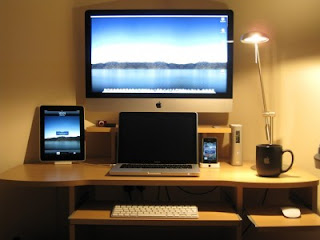1. Tremulous
Tremulous is a free, open source game that blends a team based FPS with elements of an RTS. Players can choose from 2 unique races, aliens and humans. Players on both teams are able to build working structures in-game like an RTS. These structures provide many functions, the most important being spawning. The designated builders must ensure there are spawn structures or other players will not be able to rejoin the game after death. Other structures provide automated base defense (to some degree), healing functions and much more...
Popular Posts
-
Unlike the Mac Mini, the iMac isn't as popular for modding. However, I have found some notable iMac mods. Here is a list of the best and...
-
1. Tremulous Tremulous is a free, open source game that blends a team based FPS with elements of an RTS. Players can choose from 2 unique r...
-
Apple's next Mac OS X release is due to arrive Mid 2011 with new features, functionality and enhancements. The new OS X Lion will have f...
-
Apple's next Macbook Pro series is expected to get a complete redesign of the body, according to sources at Macrumors . This will be the...
-
The shipping date for the iPhone 5 is likely to be September. According to Reuters , suppliers of Apple will begin production of the iPhone ...
-
Apple have launched their new generation iPhone named the "iPhone 4S". Externally, the iPhone 4S looks identical to its predecess...
-
Apple has released it’s first commercial for the all new iPad 2. Titled “We Believe”. “ This is what we believe. Technology alone is not ...
-
Since its launch, the Mac Mini has been a popular choice for a home theatre PC. Users even choose the Mac Mini over Apple TV because of havi...
-
Apple's CEO Steve Jobs has presented Apple's plans for building a new campus to the Cupertino City Council. The presentation inc...
-
Mac Mini NES Here is a Mac Mini built into a classic Nintendo Entertainment System. On top of that, there is a tray loading DVD drive clever...



















